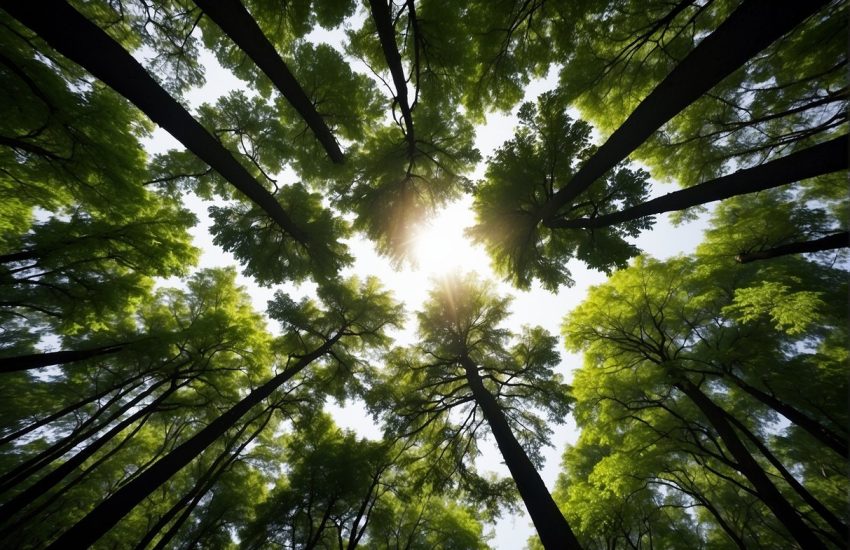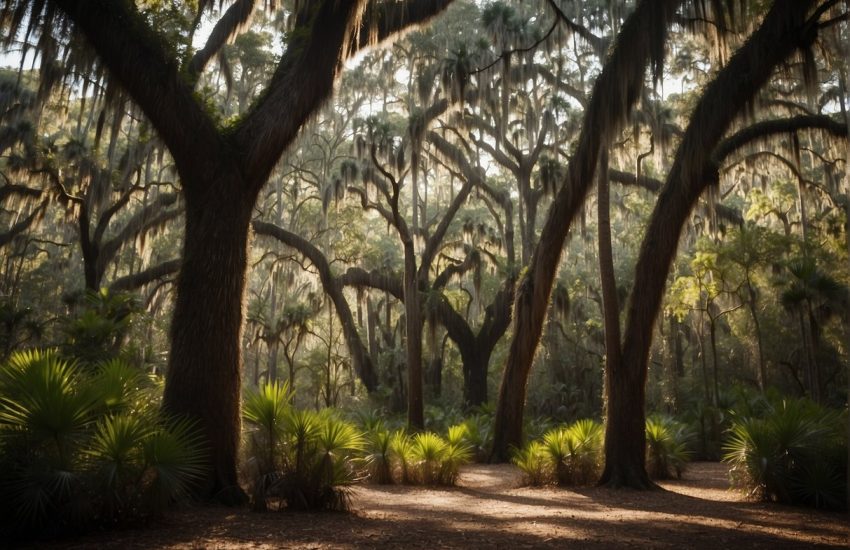Fast Growing Trees to Plant in Northern California
California is characterized by dry, long, and hit summers, and those new to the area may wonder about the fast-growing trees best for their backyards. Humans are impatient, so it is no surprise that some may be after fast-growing trees to hasten things. Fast-growing trees are valuable compared to the ones that take decades to grow because they have an energy-saving shade and act as windbreakers.
Moreover, trees hold the soil together and prevent rainwater from washing away. A variety of fast-growing trees can be very useful to homeowners in Northern California. However, you have to be careful and choose a tree compatible with the soil and climate in your area. To some extent, your choice of fast-growing trees depends on your location, and researching the amount of water each species needs and the size of trees you need is important to ensure you do not get it wrong the first time.
For instance, most fast-growing trees rely on an adequate amount of water for them to grow. Because trees are a huge investment, they need to be treated with the care they deserve, and failure to adhere to the required maintenance tips results in their loss or ending up with poorly-structured trees.
The following are some of the fast-growing tree choices to plant in Northern California:
White Mulberry
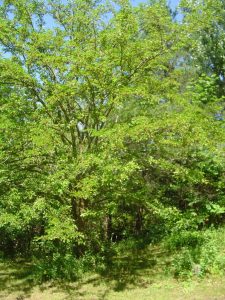
The white mulberry is medium-sized and produces abundant fruit, especially if the soil is fertile and exposed to plenty of sunshine. Its fruits are attractive to birds and often stain driveways and sidewalks hence the need to settle for the fruitless cultivar. The mulberry tree is extremely hardy, adaptive, and vigorous and can do well in the desert areas of California.
The white mulberry’s lifespan is comparable to that of humans and is characterized by a white color that sometimes appears pinkish-violet. Its large leaves are generally glossy, are winter deciduous, and are shade-friendly and little water and fertilizer go a long way in helping it grow to its full potential. The white mulberry’s fruits boast a arrange of biologically active ingredients and have traditional benefits mostly preferred in China.
Red Maple
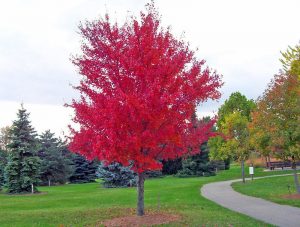
The red maple has a mature height of 60 feet and width of 30 feet and is a preferred tree for your backyard. They are attractive, bloom in all seasons, are often celebrated for their foliage, and should be exposed to up to six hours of direct sunlight to thrive better. Once established, the red maple is drought resistant and opts for moist conditions as opposed to other drought-resistant species.
Due to their weak and woody nature, they should be planted in the open, away from distractions such as animals and humans. The red maple is the perfect solution if you need flowers and a brilliant display of color in your backyard all year round. During spring, it tends to show off its red flowers first and is ideal for shade without becoming brittle or messy. Some of the attributes of the red maple tree include:
• They provide an amazing fall color
• They can grow in a rounded, upright. Erect or oval shape
• They have irregularly toothed leaves that ate medium-shaped, simple, and dark green in appearance
• They feature twin seeds that ripen in late spring, are attached to long droopy stems, and have attached wings.
Apart from the birds being attracted to its seeds, deers and rabbits are also attracted to their tender roots and juicy leaves.
Australian Willow
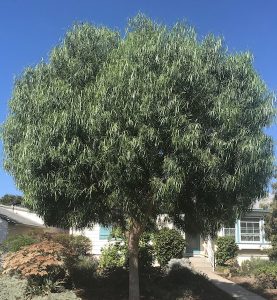
The Australian willow uses its leaves for water storage and is not only one of the most evergreen trees but also suited for high-risk locations and is fire-resistant. The tree is upright, medium size, with long slender leaves that give a beautiful flutter when there is a breeze. Once established, the tree requires very little supplemental water and is definitely an ideal choice for drought-infested areas. The tree is a preferred choice for screening, with its canopy growing more up than out.
The tree is useful for shade, and ornamental purposes, can thrive well in moist, well-drained soil, and has a high tolerance to dry conditions. So far, the tree has not had major problems with diseases and pets, is attracted to bees, and is found along streets, patios, and near decks. Some of the characteristics of the tree include:
• It has large, fibrous, and stoloniferous roots remarkable for their size, toughness, and the tenacity to live
• They have slender branches
• They have an abundant, watery bark sap
The willow tree is a sign of rebirth because of its long life and how easy it makes it for new trees to be rooted from the cuttings. Originally, the tree is from ancient China, where the branches are believed to ward off evil. All willow trees are dioecious, and fruits are only produced in female willow trees.
Reed Avocado
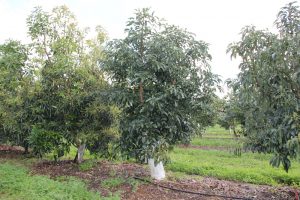
The reed avocado is relatively productive and tough and is one of the fastest and largest varieties of avocado trees to ever exist. The tree has a dense canopy and is an evergreen specie making it ideal to be used for shade purposes. To remain healthy and be as productive as it should, the reed avocado requires moist soil and may sometimes require supplemental irrigation in areas with inadequate rainfall. The reed avocado produces some of the best-tasting avocados, and some of its features include:
• The fruits tend to cling to the tree for a while after hitting the maturity stage
• Reed avocado trees bear early and regularly
• They act as a nutrient booster to the body and have high-fat levels.
Avocados have essential nutrients such as Vitamin E, potassium, fiber, folic acid, and B vitamins that help the body rejuvenate. The reed avocados are best eaten because of their excellent flavor and texture and should be sued in their purest form. Similarly, they can be smashed with garlic, chilies, and tomatoes to make guacamole, a low-budget yet tasty salad.
Potentially, avocado trees bear fruits three to five years after planting and can continue producing fruits for decades before wearing out.
Silk Tree
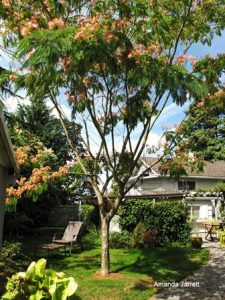
This is a fast-growing deciduous tree, and kept under the right conditions; it can capably grow up to three feet tall. Its leaves are similar to those of a jacaranda tree and are often suitable for desert areas, and they look spectacular in their most natural form as multi-trunked trees. If you are looking for a beautiful backyard or patio tree, the silk tree is definitely worth your money because of the light-filtered shade that comes with it and its beautiful umbrella habitat.
The Silk tree’s crown remains flat with age, and its leaves are similar to that of a Jacaranda tree, usually feather-like, soft, and pinnately compounded with silky pink flowers. It grows in disturbed areas such as forests ages, and roadsides and is difficult to remove once it has been established due to its long-lived seeds and the ability to re-sprout vigorously. Some of the interesting facts about the silk tree are such as:
• It can grow up to 10 feet in height and may develop a single or multi trunks
• Its leaves are close during the night and during some rainfall seasons
• Its fruits are found in a brown pod, with each pod having several light-brown, oval-shaped seeds. Usually, the seed of the silk tree ripens from August to November.
• During seed dispersal, the seeds fall directly on the ground germinating close to the main tree. The seed dispersal methods are water, wind, and animals.
Traditional Chinese communities use the silk tree to induce relaxation, and its extract is used to produce antidepressant effects in mice. The tree can survive for up to 45 years in the wild so long as the climatic condition is favorable. Depending on the shape and size of your backyard, you can trim the silk tree into the desired shape by pruning it regularly. However, silk trees create lots of debris from the fallen leaves and flowers; hence regular cleaning goes a long way in maintaining cleanliness.
Arizona Ash
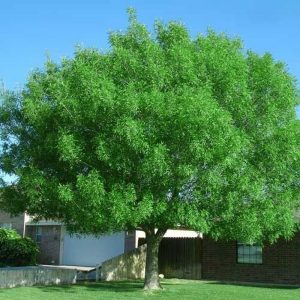
These trees are fast-growing, have a wide canopy pattern, and provide homeowners with nothing but an exclusive amount of shade. Mostly, they are planted along driveways, property borders, or as focal points in the backyard. When planted in a row or pattern, they act as the best form of windbreakers and provide privacy where required. The tree thrives in areas with direct sunlight that are heat resistant and cold hardy. They have a bright yellow-gold fall color that allows them to act as an umbrella, provide shade during the summer, and accumulate enough warmth during the winter.
How to Grow an Arizona Ash Tree
Arizona ash trees are rarely pruned, and it is advisable to consult a professional if there is a need for pruning. These trees are drought-tolerant, but regular watering of the young trees during the hot and dry weather produces the best results. The tree can survive in ordinary soil, and you can incorporate a layer of mulch to maintain the soil moisture and temperature. Do not forget to put the weeds in check and ensure the mulch does not mound on the tree trunk to prevent rodents from chewing on the bark.
The warm, humid weather encourages the growth of fungal diseases in Arizona ash trees. These fungal diseases can not only defoliate the tree during spring but also causes potential damage to the newly formed leaves. Once a year, you may need to feed the tree with a slow-release dry fertilizer for extra care and better growth. The key attributes of the ash tree include:
• They have compound leaves consisting of at least nine leaflets
• The branches, leaflets, and buds grow directly opposite each other
• Diamond-shaped bark ridges feature mature Arizona ash trees.
Bracelet Honey-Myrtle
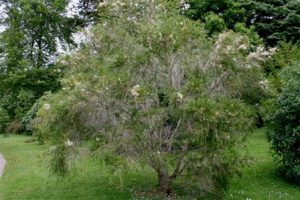
The bracelet honey-myrtle is a fast-growing, free flowering evergreen tree that hails from Australia and is suited for screening projects. The tree is either small with glossy light green leaves or a large, bushy, evergreen shrub with soft and needlelike leaves. They attract a range of small insects and birds and are drought and frost tolerant, capable of withstanding harsh sea winds and coastal exposure. The tree can be used as a living fence or screen and is a popular garden subject acting as a good habitat for birds.
They grow up to 30 feet tall and thrive when there is full sun, and the soil is well drained. The tree tolerates various soils from alkaline, acidic, sandy, and even heavy clay; hence survives in water-logged areas. They are pest-free and disease-free, but homeowners should keep a keen eye for root rot cases and phytophthora. To improve the foliage density, ensure regular pruning, and they appear to look best if clipped. Their life cycle is perennial, and they reproduce through seeds. If damaged, they have a possibility of regrowing from the stump, have no hybrids, and the method of dispersal I through seeds.
Final Thoughts
Fast-growing trees are considered because of the many values they are accompanied with. Their speedy growth’s tradeoff is that they often decline as they approach their maturity level and hence have a limited lifespan compared to the slow-growing trees. Moreover, these trees tend to have weaker wood that can easily break when threatened by stronger storms, and regular pruning is advised to help keep them in good shape and increase the chances of their survival. Giving the right care to these trees gives your yard and home, in general, a whole new transformation within a shorter time, not forgetting the protection from heavy rains and wind.
Before planting the fast-growing trees, ensure you have identified a favorable spot away from distractions that will only stagnate their growth. While planting, give heed to the sidewalks and septic lines to avoid long-term damage that may be caused to them once they sprout to their full potential. As long as there is proper care and maintenance administered to these trees, you have the chance to enjoy all the benefits they are accompanied with.

